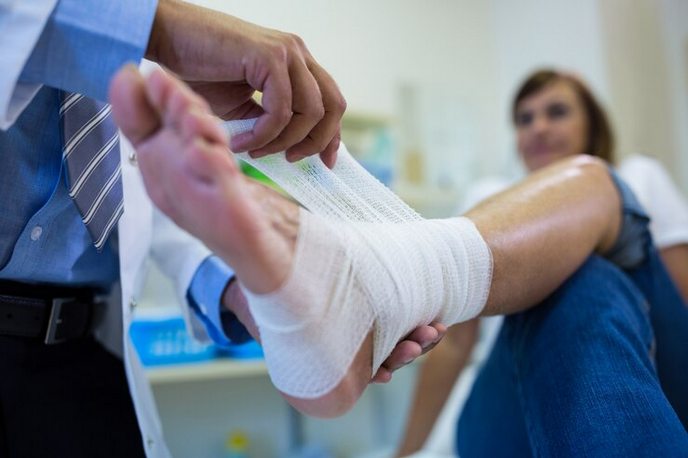Bunion surgery, a common orthopedic procedure aimed at correcting deformities of the big toe joint, marks the beginning of a journey toward recovery and improved foot health. While the surgical intervention addresses the structural abnormalities associated with bunions, the postoperative period plays a crucial role in achieving optimal outcomes and returning to a normal, pain-free lifestyle. In this narrative, we explore the challenges and considerations individuals face as they navigate life after bunion surgery, focusing on rehabilitation, recovery milestones, and strategies for promoting long-term foot health.
Understanding Bunion Surgery
Bunion surgery, technically known as hallux valgus correction, involves realigning the bones, ligaments, and soft tissues around the big toe joint to correct the deformity and alleviate associated symptoms such as pain, swelling, and difficulty wearing shoes. The procedure may vary depending on the severity of the bunion and individual patient factors but generally aims to restore normal alignment and function to the affected foot.
Rehabilitation and Recovery
The postoperative phase following bunion surgery is characterized by a period of rehabilitation and recovery, during which individuals undergo various stages of healing and adaptation. Rehabilitation typically begins immediately after surgery and progresses through several phases, guided by the surgeon or physical therapist.
In the initial postoperative period, individuals may experience pain, swelling, and limited mobility in the operated foot. Proper wound care, pain management, and elevation of the foot are essential during this time to minimize discomfort and facilitate healing.
As healing progresses, gradual weight-bearing and range of motion exercises are introduced to restore strength, flexibility, and function to the foot and ankle. Physical therapy may be prescribed to address specific impairments and optimize recovery outcomes.
Recovery Milestones
The journey of recovery after bunion surgery is marked by several important milestones, each signifying progress toward returning to normal activities and achieving long-term foot health:
- Wound Healing: The initial focus of recovery is on wound healing and resolution of postoperative swelling and inflammation. Keeping the surgical site clean and dry, adhering to prescribed wound care protocols, and avoiding excessive pressure or trauma to the foot are essential during this phase.
- Pain Management: Managing postoperative pain and discomfort is a priority in the early stages of recovery. Pain medications, ice therapy, and elevation of the foot can help alleviate pain and swelling, allowing individuals to gradually resume activities of daily living.
- Gradual Weight-Bearing: Transitioning from non-weight-bearing to partial weight-bearing and eventually full weight-bearing is a key aspect of rehabilitation after bunion surgery. Gradual progression in weight-bearing activities helps prevent complications such as excessive stress on the surgical site or delayed healing.
- Physical Therapy: Engaging in prescribed physical therapy exercises and rehabilitation protocols is crucial for restoring strength, mobility, and function to the operated foot. Physical therapists work closely with individuals to develop personalized exercise programs tailored to their specific needs and recovery goals.
- Return to Activities: Returning to normal activities, including walking, standing, and wearing shoes, is a significant milestone in the recovery process. Individuals may gradually resume light activities and gradually progress to more strenuous tasks as directed by their healthcare provider.
Strategies for Long-Term Foot Health
While successful bunion surgery can provide significant relief from pain and deformity, maintaining long-term foot health requires ongoing care and attention. Adopting preventive strategies and lifestyle modifications can help minimize the risk of bunion recurrence and promote overall foot well-being:
- Proper Footwear: Wearing supportive, well-fitted shoes with adequate room for the toes is essential for preventing bunion recurrence and minimizing foot discomfort. Avoiding high heels and narrow-toed shoes can help alleviate pressure on the toes and promote proper foot alignment.
- Foot Care: Practicing good foot hygiene, including regular washing, moisturizing, and nail trimming, can help prevent complications such as ingrown toenails and fungal infections. Inspecting the feet for any signs of redness, swelling, or abnormalities and seeking prompt medical attention for any concerns is also important for maintaining foot health.
- Orthotic Support: Using custom orthotic inserts or shoe inserts can provide additional support and cushioning to the feet, reducing stress on the big toe joint and surrounding structures. Orthotics can help maintain proper foot alignment and distribute pressure evenly across the foot, reducing the risk of bunion recurrence and other foot problems.
- Regular Exercise: Engaging in regular foot exercises and stretches can help improve strength, flexibility, and range of motion in the feet and ankles. Exercises such as toe curls, ankle circles, and calf stretches can help maintain optimal foot health and prevent stiffness or weakness in the lower extremities.
Conclusion
In conclusion, life after bunion surgery is a journey of rehabilitation, recovery, and adaptation, characterized by gradual progress and milestones toward improved foot health and function. From the initial stages of wound healing and pain management to the eventual return to activities of daily living, individuals undergoing bunion surgery must navigate various challenges and considerations to achieve optimal outcomes.
By adhering to prescribed rehabilitation protocols, monitoring recovery milestones, and adopting long-term preventive strategies, individuals can promote successful outcomes and maintain foot health beyond the immediate postoperative period. Ultimately, the road to recovery after bunion surgery is paved with perseverance, patience, and a commitment to prioritizing foot health and well-being.
2 / 2





Comments